OUR HISTORY
Explore the heritage of Mondelēz International
Even though Mondelēz International is a relatively young company (founded October 1, 2012), it was built on the foundation of several predecessor companies, most of which date back over 100 years. Learn more about the rich history of our brands, legacy companies and our founders that helped make Mondelēz International who we are today.
Our Founders
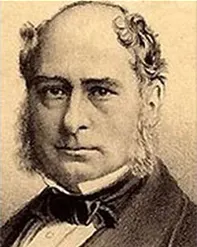
The birth of the modern day chewing gum industry can be traced to the 1850s when Thomas Adams Sr., a New York wholesale glass merchant and inventor, became acquainted with General Antonio López de Santa Anna, president of Mexico. When Santa Anna was exiled from Mexico and came to the U.S. in the mid-1860s, he stayed with friend Adams at his Staten Island home. Santa Anna suggested to Adams that he create a formula to make carriage or bicycle tires by experimenting with chicle, a substance found in Central American sapodilla fruit trees. About one ton of chicle from Mexico was shipped to New York and Adams, assisted by his son Thomas Jr., tried unsuccessfully to use chicle as a rubber substitute for tires and other items.
The supply of chicle sat in a warehouse until Adams was inspired by a girl asking for chewing gum in a New York drugstore. He came up with the idea to use the chicle to make chewing gum. Until this time, chewing gum was made with spruce tree resin or paraffin wax. In about 1869, Adams and his son started making unflavored and unsweetened chicle chewing gum in the kitchen of their home, first rolling the chicle flat with a rolling pin and then cutting it into pieces with scissors. They boxed and labeled the product “Adams’ New York Chewing Gum No. 1 – Snapping and Stretching”. Thomas Jr. took boxes of their new chewing gum and left them on consignment at drug stores. Their chicle gum was a success with consumers and soon reorders poured in.
In 1871 Adams registered U.S. Patent #111,798 for a method of preparing “chickly” [chicle] to produce chewing gum and began commercial mass production of the confectionery product. With two of his sons, Thomas Jr. and John D., Thomas Adams, Sr. started Adams & Sons Company in 1876.
The firm was the world’s most prosperous chewing gum company by the end of the century. Thomas Jr. became president of the company when Thomas Sr. retired in 1898. Thomas Jr. then built a gum powerhouse in 1899 by merging with the six largest and best-known chewing gum manufacturers in the United States and Canada, and achieved great success as the maker of Chiclets.
Thomas Adams Sr. died in 1905 at the age of 87.
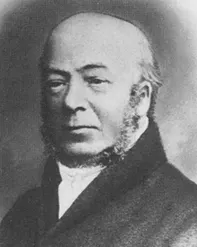
John Cadbury was born in Birmingham, England, on 12th August 1801. He was from a Quaker family and did not have the option to go to university as this was against Quaker beliefs. Instead he became an apprentice to a tea dealer in Leeds in 1818. He opened a grocer’s shop at 93 Bull Street, Birmingham in 1824, selling amongst other things, cocoa and drinking chocolate, which he prepared himself using a mortar and pestle. Tea, coffee, cocoa and drinking chocolate were seen as healthy alternatives to alcohol, which as a Quaker he believed was bad for society.
After several years, John decided to start manufacturing on a commercial scale. In 1831 he purchased a warehouse in nearby Crooked Lane. The earliest preserved price list from 1842 shows that he was selling 16 lines of drinking chocolate in cakes and powder format, and eleven lines of cocoa in powder, flakes, paste and cocoa nibs formats. He was only selling one line of eating chocolate at this time. In 1846 John took his brother Benjamin into partnership and the name of the firm was changed to Cadbury Brothers.
In 1847 the business moved to a new factory in Bridge Street. . The partnership with Benjamin was dissolved by mutual consent in 1856 and John retired in 1861, handing over complete control of the business to his two sons, Richard and George. The following decades saw the Cadbury business grow to become an industry leader by harnessing the opportunities of industrialisation and creatively marketing to a growing consumer class.
John Cadbury spent his retirement engaged in civic and social work in Birmingham. Philanthropy had been important to him all his life; over the years he had led a campaign to ban the use of boys as chimney sweeps, campaigned against animal cruelty and formed the Animal Friends Society, a forerunner of the RSPCA. John died on May 11th 1889, aged 87.
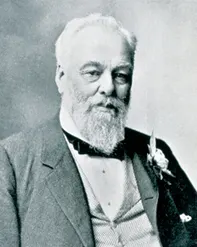
William M. Christie came to Canada from Scotland at the age of 19 in 1848 and worked as a baker in Toronto. In September of 1849 he joined a partnership formed by James Mathers and Alexander Brown to work as an assistant baker and traveling salesman.
When James Mathers retired in 1850, Alexander Brown took William Christie into the partnership. In 1853, when Alexander Brown retired, he left the business with William Christie. In 1861, when William suffered financial setbacks, Alexander Brown returned to the business, which then adopted the name Christie, Brown & Company.
On February 11, 1878, Alexander Brown retired for the second time and the business was purchased by William Christie. He built his business on the premise that customers deserved a quality product with the best ingredients. After attending the Philadelphia Centennial Exhibition in 1876 with samples of his biscuits, he returned with silver and bronze medals. This was just the first of many such trips and "Mr. Christie" soon became known for his high quality biscuits.
In 1900, the son of William Christie, Robert J. Christie, took over the business. At the time, the company had grown from using less than 50 barrels of flour a week to using 160 barrels of flour, one and one-half tons of butter and lard, and thousands of eggs every working day. The business, under the direction of William Christie, had expanded to the point where Christie, Brown & Company employed approximately 375 people by the turn of the century and had offices in Montreal, as well as Toronto. Deliveries were made to all parts of Canada.
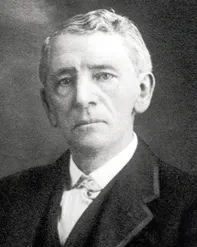
Adolphus Green, a successful attorney in Chicago, Illinois, began his association with the baking industry in the late 1880s when a committee of prominent bakery owners across the Midwest came to his office and sought his assistance. The bakers realized that times were changing and that bakeries had to change with it. The result of that meeting was the formation in 1890 of the American Biscuit & Manufacturing Company, led by Adolphus Green. This new company combined approximately 40 Midwestern bakeries in the hopes of improving product quality and efficiency.
In 1898, Adolphus merged his company with William Moore’s New York Biscuit Company, along with the United States Baking Company, to form the National Biscuit Company, a formidable collection of 114 bakeries. Adolphus Green was president of this new national company.
Adolphus was convinced his new company needed a big idea to gain the public's attention. He got it very quickly when the company that same year developed a cracker with a new shape that was lighter and flakier than anything else being made at that time. He considered many names for the product and decided on Uneeda biscuit. However, the quality and freshness of the new Uneeda biscuit wouldn't mean much if the product didn't arrive for customers that way. The previous method of bulk sales would no longer do the job. National Biscuit Company needed a major step forward in packaging and created it with the "In-er-seal" package, an ingenious system of inter-folded layers of wax paper and cardboard. It was the first of many innovations in biscuit packaging.
Over the next several decades National Biscuit Company, often referred to by the abbreviation N.B.C., grew by acquiring companies such as the F.H. Bennett Company, maker of Milk-Bone pet products, and the Shredded Wheat Company, maker of Triscuit wafers and Shredded Wheat cereal. During this time, the company was also busy developing numerous cookies and crackers, many of which continue to be family favorites, such as Oreo cookies, Ritz crackers and Honey Maid graham crackers.
The name Nabisco first appeared on a new sugar wafer product in 1901, but the corporate name did not change until 1971.
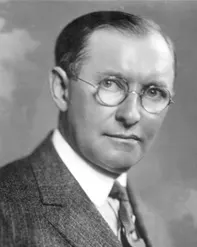
By the age of 29, James Lewis Kraft had experience in three business enterprises, including a cheese business based in Buffalo, NY. That year, 1903, while in Chicago managing the company's local branch, Kraft's business partners eased him out. Stranded in this city with a scant $65, Kraft quickly put his merchandising experience to work.
He noticed that local merchants had to travel to Chicago's wholesale warehouse district to buy the cheese they sold in their stores. So, Kraft used his meager capital to rent a horse and wagon, and each day purchased a stock of cheese to resell to the small storekeepers. The merchants appreciated the convenience, and Kraft prospered.
By 1909, his brothers Charles, John, Fred and Norman joined him, and they incorporated the business under the name of J.L. Kraft & Bros. Co., with J.L. Kraft as president.
In 1915, they began producing processed cheese in 3-1/2 and 7-3/4 ounce tins. J.L. Kraft's method of producing processed cheese was so revolutionary, in 1916 he obtained a patent for it. J.L. Kraft followed up on his success with processed cheese in tins by introducing or acquiring many additional products, including such familiar names as Velveeta process cheese, Philadelphia cream cheese, Miracle Whip salad dressing and Kraft macaroni & cheese dinner.
He used innovative advertising to promote his products and was a pioneer in the sponsorship of American television and radio shows. The company's "hands" commercials, showing a pair of hands preparing recipes using Kraft products, became a symbol of the company's advertising success.
The success of J.L. Kraft and his company was noted by Thomas McInnerney, founder of National Dairy Products Corporation. In 1930, Kraft-Phenix Cheese Corporation (as it was then called) was acquired by National Dairy Products Corporation. Kraft continued to operate as an independent subsidiary of National Dairy Products Corporation for many years, but eventually was absorbed into the operating structure of the parent company, which changed its name to Kraftco Corporation in the late 1960s, almost 16 years after J.L.’s death.
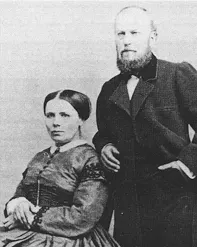
Monsieur Jean-Romain Lefèvre arrived in the seaside town of Nantes, France in 1846 and opened a biscuit factory at number 5 rue Boileau. His unique cookies and pastries, often made from local ingredients, were an immediate success with the local citizens. In 1850, Jean-Romain Lefèvre married Mademoiselle Pauline-Isabelle Utile. They combined their lives - and their surnames - and Lefèvre-Utile biscuits were born.
The couple opened a beautiful new retail store at number 7 rue Boileau in a building adjacent to their factory. By 1880 the Lefèvre-Utile factory employed fourteen workers. In 1882 Lefèvre-Utile biscuits won a gold medal at the Nantes exposition. This medal crowned the career of Jean-Romain who died one year later. Pauline-Isabelle assumed management of the bakery after her husband’s death.
The family business soon passed to Jean-Romain and Pauline-Isabelle’s third son, Louis Lefèvre-Utile. In 1887 Louis, along with his brother-in-law Ernest Lefèvre, established the Lefèvre-Utile Company. They build a new biscuit factory using the most modern baking techniques. Louis also began devoting resources to advertising in order to promote LU biscuits. He appealed to the best graphic designers and painters of his day, such as Firmin Boisset and Alfons Mucha, who lend their talents to create exquisite publicity materials.
In 1897 LU introduced what would become its signature cookie -- Le Petit Êcolier “The Little Schoolboy.” This new product consists of a scalloped butter biscuit topped with fine chocolate imprinted with the schoolboy figure. By the end of the 19th century the sale of LU biscuits extended throughout France and several foreign markets. And the LU factory employed several hundred workers.
In 2007 Kraft Foods Inc. acquired Group Danone's global biscuit business including the market-leading LU brand. Today, LU biscuits continue to make life’s delicious little luxuries as they have for over 150 years.
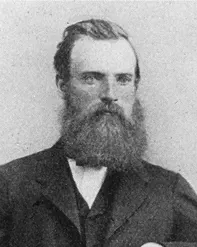
Carl Russ-Suchard was born in Solingen, Germany in 1838. In 1884, he took over the reins of Chocolat Suchard from his father-in-law, Philippe Suchard, who founded the chocolate factory in Neuchâtel, Switzerland in 1826.
Carl Russ-Suchard had been experimenting for a long time on how to enhance the taste and consistency of chocolate bars - which were still quite bitter and hard in those days - by adding milk. At last, he succeeded in combining the cocoa mass with powdered milk that was extracted from Alpine milk. This was still an entirely innovative product at this time.
With the right intuition for the ingredients and an entrepreneurial, forward-looking vision, he was able to introduce a sustainable milk chocolate on the market with this process. In 1901, he created the renowned Milka chocolate with its one-of-a-kind lilac look, and he made it popular on a transnational level.
Up until his golden years, Carl Russ-Suchard contributed his competence and experience to chocolate production.
Carl Russ-Suchard passed away in 1925 at the age of 87.
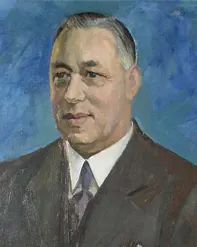
In 1915, Holger Sørensen established a confectionery factory in Vejle, Denmark. His confectionery company named Vejle Caramel-og Tabletfabrik earned a reputation for high quality products. But Sørensen was always looking for new opportunities. At an exhibition in London, he noticed a new product – chewing gum. He bought the recipe and began experimenting with making chewing gum in his own kitchen. His first chewing gum, Vejle Tyggegummi, was introduced to the Danish market in January 1927 and became an instant success. Quality remained key for Holger Sørensen as it had from the start and continued as top priority for his chewing gum.
In 1939, the chewing gum maker adopted the name Dandy, and the Dandy brand name appeared for the first time.
Following Holger Sørensen death in 1943, his son, Erik Bagger-Sørensen, took charge of the company along with his mother. After World War II, he gained sole responsibility for managing the company. With his talent for business, production, development and interest in trade and export, the Dandy company entered a period of dramatic development with new factories, export opportunities and new products. Stimorol, which would become Dandy’s most popular gum brand, was introduced in 1956.
Cadbury Schweppes acquired the branded chewing gum business of Dandy A/S from the Bagger-Sørensen family in 2002. The Dandy chewing gum brands at that time included Stimorol, V6 and Dirol.
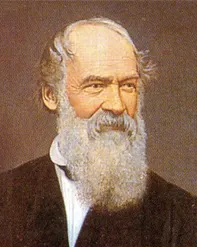
When he was just a little boy, Philippe Suchard, born in 1797 in Boudry in the Swiss canton of Neuenburg, already dreamed of producing chocolate someday himself.
At the age of ten he came into contact with chocolate for the very first time. At a pharmacist in Neuchâtel he went to buy a pound of chocolate - known as a “pick-me-up” at that time - as a medical remedy for his ailing mother. The expensive “medicine” cost him six francs. At that time this was equivalent to about three days wages for a laborer. On the way home, the ten-year-old dreamed about what it would be like to earn a living making chocolate.
Chocolate was Suchard's passion from then on. And a few years later, in 1814, he started an apprenticeship in confectionary with his older brother Frédéric in Berne.
In 1825, his childhood dream actually came true and he opened his own small confectionery business in Neuchâtel, Switzerland. He offered fine chocolate made by hand and laid the cornerstone for Suchard's success.
Just about one year later, in 1826, he built his first chocolate factory on the banks of the Serriere River, in Neuchâtel-Serrières. With the help of a kneading and stamping machine fueled by hydropower, Suchard and his employee were able to produce 25 to 30 kilograms of chocolate per day. In 1880, the ambitious Suchard expanded further and opened his first factory abroad, in the German city of Lörrach.
By 1883 Chocolat Suchard was one of the largest chocolate companies in Switzerland, and Philippe Suchard was one of the most important chocolate manufacturers. Even today, his name and his products are well-known far beyond Switzerland.
Philippe Suchard passed away in 1884 at the age of 87.
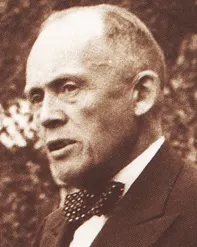
Henning Throne-Holst, the son of the founder of Norway’s Freia chocolate company, was commissioned by his father, Johan, to go to Sweden in 1916 and start a chocolate industry there named after the Freia company logo, the Marabou stork. At the young age of 23, he brought with him his father’s knowledge of the chocolate industry and his father’s dedication to quality.
Freia had opened a very fashionable store on Oslo's main commercial street at th end of the previous century. The store radiated exclusiveness, with mahogany paneling, cut-glass chandeliers and velvet-covered chairs and sofas. The young Throne-Holst wanted Marabou to have something similar in Sweden. In the 1920’s Marabou acquired two stores in Stockholm, one in Gothenburg and one in Malmö. In those days, the best in interior decorating was supplied by the Swedish department store NK, which was commissioned to furnish these stores. The four stores reflected Marabou’s commitment to quality, not only in the furnishings but also in the service-mindedness of the staff. The stores catered to those who wanted fresh chocolate and something extra in the way of fancy hand-packed boxes.
Although independent operations, the Freia and Marabou companies worked closely together over the years, and in 1990 Freia bought the Marabou chocolate business. Freia Marabou a/s thus became Scandinavia’s leading manufacturer of chocolate and sugar confectionery.
Our Corporate Timelines
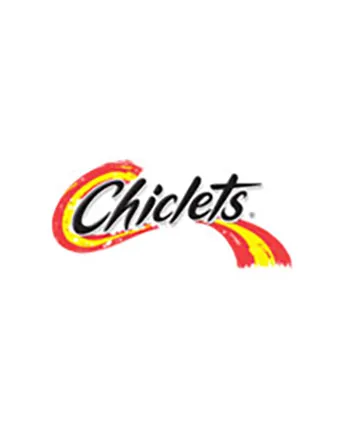
1927 - American Chicle Company opens a factory in Mexico City. Factories now are operating in Long Island City, San Francisco, Toronto and Mexico City.
1933 - A revolutionary gum wrapper is developed that seals all the original factory freshness inside an airtight foil wrapper.
1941 - American Chicle Company manufacturing plants are now operating in Argentina and Venezuela.
1956 - Production begins at the company’s new Rockford, Illinois plant in October.
1962 - Warner-Lambert acquires American Chicle Company and re-names it American Chicle Group. American Chicle introduces Trident Original flavor gum. Launched in 1960 as a sugar gum, it is now a high quality sugarless gum.
1964 - Warner Lambert, through its British affiliate, purchases Hall Bros (Whitefield) Ltd., of Manchester, England. Hall Bros. (formed in 1893) is a manufacturer of medicated sweets and other sugar confectionery.
1972 - Several of the Adams gum brands convert to new 8-stick, 10-cent packs.
1974 - The suggested retail price of Dentyne, Trident, Chiclets and other Adams brand gums is now 15 cents per package.
1981 - The Long Island City factory closes.
1983 - A new chewing gum plant opens in Egypt to supply that Middle East country.
1988 - Bubbaloo gum is introduced in Central America, Spain and Puerto Rico. It launches in the U.S. the following year.
1989 - Warner-Lambert gum and mint sales top $1Billion for the first time.
1992 - Nearly 60% of Warner-Lambert’s confectionery sales now occur outside the U.S.
1994 - In June, Warner-Lambert acquires Saila S.p.A., a privately held confectionery company based in Italy.
1995 - In April Warner-Lambert acquires Adams S.A., a privately held manufacture of confectionery products in Argentina.
1997 - Warner-Lambert changes the name of its gum and confectionery unit from American Chicle Group to Adams.
2000 - Pfizer Inc. acquires Warner-Lambert Company, including its Adams confectionery division and its gum brands.
2003 - In March, Cadbury Schweppes completes its acquisition of Pfizer Inc.’s Adams confectionery business. It is renamed Cadbury Adams.
2005 - To kick-off the 135th birthday of modern chewing gum, Cadbury Adams USA re-releases three of its nostalgia brands: Beeman’s, Black Jack and, for the first time in a generation, Adams Sour gum.
2006 - Cadbury Adams introduces a new gum brand. Stride, “the ridiculously long lasting gum,” is introduced it the U.S.
2008 - Specific varieties of Trident, Dentyne Ice and Stride sugar-free chewing gum are granted the American Dental Association (ADA) Seal of Acceptance in recognition of the gums’ ability to help prevent cavities by strengthening teeth and reducing plaque acids.
2010 - Kraft Foods Inc. acquires Cadbury plc on February 2, including the Cadbury Adams gum business.
2023 - Mondelēz International completes sale of developed market gum business to Perfetti Van Melle.
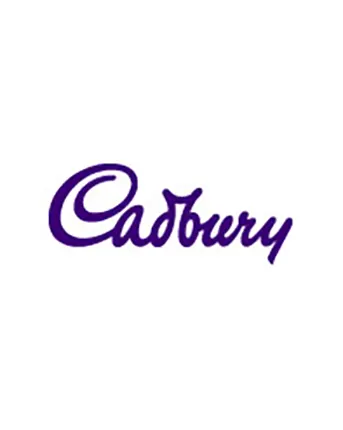
1824 - At 22 years of age John Cadbury opens his first grocer’s shop next door to his father’s drapery and silk business at 93 Bull Street, a fashionable part of Birmingham, England. John Cadbury sells hops, mustard and a new sideline – cocoa and drinking chocolate made with cocoa beans imported from South and Central America and the West Indies.
1831 - With growing sales of cocoa and drinking chocolate, Cadbury decides to produce hem on a larger scale. He rents an old warehouse in Crooked Lane, Birmingham to use as a factory.
1842 - Cadbury is now selling 16 kinds of drinking chocolate and 11 kinds of cocoa.
1847 - Cadbury rents a larger factory in the centre of Birmingham in Bridge Street. His brother Benjamin Cadbury joins him and the business becomes Cadbury Brothers of Birmingham.
1853 - Cadbury Brothers open a sales office in London.
1854 - Cadbury Brothers receive their first Royal Warrant on 4 February as “manufacturers of cocoa and chocolate to Queen Victoria.”
1856 - A more established chocolate company, Fry, proves to be tough competition for Cadbury Brothers. Business declines and the partnership dissolves. John Cadbury takes over sole ownership of the struggling firm.
1861 - John Cadbury is in poor health and hands the reigns of the business to his sons Richard and George Cadbury. The young men are just 25 and 21 years old respectively. They struggle to keep the business and work hard at promoting their goods to the trade. Their dedication, in addition to innovative new products and quality improvements, help the business survive and prosper.
1866 - The turning point for the young Cadbury brothers is a new processing technique and the resulting product: Cadbury Cocoa Essence. The new cocoa press, purchased from a Dutch manufacturer, squeezes out much of the cocoa butter from the beans so it is no longer necessary to put starches in the cocoa. The Cadbury brothers are the first British chocolate manufacturer to use this new process. The marketing of Cadbury Cocoa Essence as “Absolutely Pure, Therefore Best” helped sales increase dramatically.
1879 - Now employing 200 people, Richard and George Cadbury need a bigger factory. Instead of looking at another city location they chose a greenfield site four miles from the centre of Birmingham on what would be called Bournville Lane. There are practical business reasons why this site is appealing: canal and rail links, roads and water supply. Also, the workers can live in far better conditions than in the crowded slums of Birmingham. Production begins on this “factory in a garden” in September.
1897 - Using left over cocoa butter from its drink powder, Cadbury produces its first milk chocolate bar for eating. However, the bar is dry and not sweet enough to be successful.
1899 - Richard Cadbury dies and the business becomes a private limited company: Cadbury Brothers Limited. George Cadbury becomes chairman of the new board. By this time the Bournville factory has more than 2,600 employees.
1919 - For many years Cadbury has had close links with U.K. chocolate maker J.S. Fry and Sons Limited. The two companies sign an agreement to create a new holding company, the British Cocoa and Chocolate Company, which takes over the assets of both businesses. The company is still referred to by most as “Cadbury.” A new site is found for Fry’s outside of Bristol at Keynsham. It is named Somerdale.
1921 - Cadbury becomes an international company when its first overseas factory opens in Tasmania. Other factories soon follow in Canada, Dublin and South Africa.
1939 - The second World War begins. During the war, rationing is enforced and raw materials are in short supply. The company produces Ration Chocolate made with dried skimmed milk powder.
1949 - Cadbury opens a factory in India.
1953 - Wartime rationing comes to an end in the United Kingdom and full supplies of sugar and full cream milk are again available. During the 1950’s Cadbury expands its product range, undertakes a lot of promotional work and manages to fend off competitors by keeping its direct distribution system.
1955 - Cadbury launches its first television advertising on 22 September with an ad for drinking chocolate.
1964 - Cadbury acquires the London-based confections business of James Pascall, maker of chocolate éclairs.
1967 - The holding company British Cocoa and Chocolate Company changes its name to Cadbury Group Ltd.
1969 - Cadbury Group Ltd. merges with Schweppes Ltd. to create Cadbury Schweppes plc.
1970s - The Cadbury chocolate business experiences a decade of unprecedented sales growth, partially due to hugely successful and memorable television advertising campaigns.
1980 - Dominic Cadbury becomes managing director of the UK Confectionery Division and institutes the biggest revolution of Cadbury’s UK factories since the rebuilding of Bournville in the 1920s. The number of production lines decreases from 78 to 33 in a £110 million investment which replaces aging equipment with state-of-the-art production technology.
1988 - Cadbury Schweppes acquires Chocolat Poulain, maker of the number 3 chocolate brand in France at that time. This is the first major acquisition in Cadbury’s new strategy of growth through acquisition.
1989 - Cadbury Schweppes acquires both Trebor Group Ltd – maker of Trebor and Maynards sugar confections – and Bassett Foods plc – the maker of Bassetts licorice.
1990 - Trebor and Bassett merge to form Trebor Bassett Ltd.
1995 - Cadbury Schweppes acquires Allan Candy, including the Sour Patch trademark in Canada.
1997 - Cadbury Schweppes acquires Jaret International, including the Sour Patch trademark, in the U.S.
2000 - Cadbury Schweppes acquires Hollywood, a leading French chewing gum brand.
2002 - Cadbury Schweppes acquires Dandy A.S. of Denmark, including Stimorol, Dirol and V6 gum brands.
2003 - Cadbury becomes the world’s number one confectionery company ( and number 2 in chewing gum) with the acquisition in March of U.S.-based Adams chewing gum business. This includes Halls, Dentyne, Trident brands and the Bubbas bubble gum range.
2005 - Cadbury Schweppes acquires U.K. premium organic chocolate brand Green & Black’s.
2008 - Cadbury and Schweppes de-merge effective 7 May, separating the confections and beverages businesses into two companies. The confections business is called Cadbury plc.
2010 - On February 2, Cadbury plc is acquired by U.S. based Kraft Foods Inc. in a £11.5 billion deal.
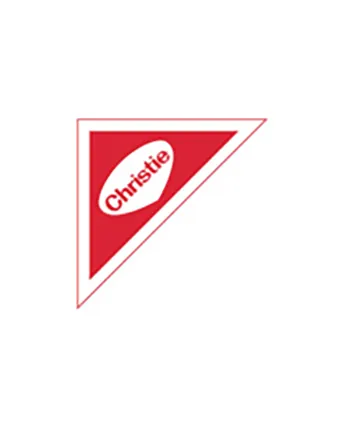
1849 - A partnership is formed in Toronto, Ontario, Canada by Messrs. James Mathers and Alexander Brown. William Christie is an assistant traveling salesman for the enterprise. Offices are on Yonge Street.
1850 - James Mathers retires.
1853 - Alexander Brown retires and leaves the business in the hands of William Christie.*
1860s - Peek Freans biscuits are imported into Canada by Peak Frean & Co. Ltd (United Kingdom).
1861 - Alexander Brown returns in partnership with William Christie and the name Christie, Brown & Co. is adopted.
1871 - The business moves its offices to Francis Street in Toronto.
1874 - The business moves again to a building on Frederick and Duke Streets.
1878 - Alexander Brown again retires and William Christie continues doing business under the name of Christie, Brown & Co.
1899 - A joint stock company is formed under an Ontario charter on June 1 and William Christie is made the first president of Christie, Brown and Company, Limited.
1900 - William Christie dies in June. His son Robert Jaffray (R.J.) Christie assumes the presidency.
1905 - David biscuits are introduced in Quebec by Arsene and Raymond David.
1925 - Christie, Brown and Company, Limited is incorporated under a Dominion charter.
1926 - R.J. Christie dies. Charles Edmonds becomes president.
1928 - U.S. based National Biscuit Company acquires Christie, Brown and Company, Limited. Many popular U.S. NBC cookie and cracker products are soon marketed in Canada under the Christie trademark.
1929 - Dad's cookies are introduced in Ontario and Quebec.
1945 - Dad’s Cookies Ltd. (maker of Dad's cookies) is incorporated.
1948 - Peek Frean (Canada) Ltd. is incorporated.
1949 - Production of Peek Freans biscuits begins in Canada when Peek Frean (Canada) Ltd. opens a bakery in East York, Ontario (Toronto). The East York bakery is located at 5 Bermondsey Road.
1950 - A new biscuit bakery officially opens at Etobicoke, Ontario (Toronto), now known as Lakeshore bakery.
1953 - Christie, Brown and Company, Limited celebrates its 100th anniversary.
1957 - David Biscuits Ltd. is incorporated (maker of David cookies and confections).
1961 - Christie, Brown & Co. begins baking Girl Guide cookies for Girl Guides of Canada organization.
1968 - Dad’s Industries Ltd. is incorporated, with Dad’s Cookies Ltd. as a subsidiary.
1972 - Peek Frean (Canada) Ltd. changes its name to Associated Biscuits of Canada Ltd. Associated Biscuits of Canada Ltd. acquires David Biscuits Ltd., maker of David cookies and confections. Dad’s Industries Ltd. acquires partial ownership of E. Harnois Ltd., maker of Harnois cookies. Dad’s Industries acquires full ownership in 1973.
1978 - Associated Biscuits of Canada Ltd. acquires Dad’s Industries Ltd. and its subsidiary Dad’s Cookies Ltd., maker of Dad's cookies.
1982 - Nabisco, Inc., parent of Christie, Brown and Company, Limited and Standard Brands Inc., parent of Standard Brands Limited, merge to become Nabisco Brands, Inc. The Canadian subsidiaries become Nabisco Brands Canada Ltd. on December 31. Christie, Brown and Company, Limited ceases to exist as an organizational entity but the familiar Christie triangle trademark remains on Nabisco’s cookies and crackers in Canada.
1983 - In January, Nabisco Brands Canada Ltd. acquires Associated Biscuits of Canada Ltd., maker of Dad's, David, Harnois, and Peek Freans brands of cookies and crackers.
*Sources vary significantly regarding the events between 1849 – when the original partnership is formed – and 1861 when the name Christie, Brown & Co. is adopted. However, since the early 20th century the “origin” of the company is referred to as 1853 (probably when William Christie took sole control of the business), rather than 1861 when the name Christie, Brown & Co. was first adopted.

1903 - James Lewis (J.L.) Kraft rents a horse and wagon, purchases wholesale cheese and begins selling it to small stores in Chicago, Illinois.
1909 - J.L. Kraft & Bros. Company is incorporated, with four of J.L. Kraft’s brothers – Charles, Fred, Norman and John - involved in the business.
1910 - Business increases 125% over the preceding year.
1914 - J.L. Kraft and his brothers decide to manufacture and sell their own cheese products so the company buys its first cheese plant – in Stockton, Illinois. This move eventually makes Kraft a household name throughout the world.
1915 - J.L. Kraft & Bros. Co. begins producing process cheese in 3-1/2 ounce and 7-3/4 ounce tins.
1916 - J.L. Kraft receives a U.S. patent for his method of producing process cheese in tins.
1921 - J.L. Kraft & Bros. Co. headquarters is now located at 400 Rush Street in Chicago, Illinois.
1924 - J.L. Kraft’s sales operation shows its first signs of global expansion when Kraft establishes a sales office in London.
J.L. Kraft & Bros. Co. changes its name to Kraft Cheese Company. J.L. takes his company public and the first shares are traded on the Chicago Stock Exchange.
1926 - Net sales top $36 million.
1928 - Kraft Cheese Company merges with Phenix Cheese Corporation (established in 1880) of Chicago, Illinois, maker of Philadelphia cream cheese. The company name changes to Kraft-Phenix Cheese Corporation.
1930 - National Dairy Products Corporation (NDPC), with headquarters in New York City, acquires Kraft-Phenix Cheese Corporation in May.
1938 - The headquarters of Kraft-Phenix Cheese Corp., a wholly-owned subsidiary of NDPC, move to 500 Peshtigo Court in Chicago. The newly constructed building near the lakefront houses both manufacturing and head office facilities.
1940 - Kraft-Phenix Cheese Corporation, a subsidiary of NDPC, changes its name to Kraft Cheese Company.
1945 - Kraft Cheese Company, a subsidiary of NDPC, changes its name to Kraft Foods Company, a subsidiary of NDPC, to reflect its diversified food product lines.
1951 - National Dairy Products Corporation sales, which include Kraft dressings, dinner and cheeses, top the $1 billion mark.
1953 - Now more than 200 consumer products carry the Kraft name. The company operates in 43 U.S. states and the District of Columbia, 8 Canadian provinces and 3 foreign countries (Australia, England and Germany).
J.L. Kraft dies.
1957 - After nearly 30 years as a wholly-owned subsidiary of NDPC, Kraft Foods Company officially becomes the Kraft Foods Division of NDPC in June.
1963 - Kraft establishes a presence in Central America by opening a production facility in Panama.
1969 - National Dairy Products Corporation changes its name to Kraftco Corporation to reflect that the company markets more than dairy products and is international in scope.
Sales reach over $2.5 billion.
1972 - Kraftco Corporation headquarters move from New York City to Glenview, Illinois, a northern Chicago suburb.
1976 - Kraftco Corporation becomes Kraft, Inc. in October. The former holding company with semi-autonomous divisions is reorganized into an operating company with groups focused on specific markets.
1980 - Kraft, Inc. establishes the company’s first European headquarters in Eschborn, Germany. Kraft, Inc. merges with Dart Industries Inc. (established in 1902 as United Drug Company) of Los Angeles, California, to form Dart & Kraft, Inc. Besides Kraft products, the company includes Duracell, Tupperware, Hobart, West Bend and Wilsonart. The company vacates its 500 Peshtigo Court building in December 1980 when it consolidated corporate and group facilities at its headquarters in Glenview, Illinois. Remaining Kraft employees move from the Peshtigo Court to Glenview in the early 1980s.
1985 - Kraft acquires Invernizzi S.p.A. of Melzo, Italy, the largest cheese company in that country.
1986 - Dart & Kraft, Inc. spins off to shareholders most of the company’s non-food businesses and changes its name to Kraft, Inc. The new Kraft, Inc. includes Kraft food and Duracell battery businesses.
1988 - The Duracell batteries business is sold to Duracell Holdings Corporation, an affiliate of Kohlberg Kravis Roberts & Co., and Kraft returns to being “all food” for the first time in more than 30 years. Kraft, Inc. becomes a part of Philip Morris Companies Inc., effective December 7, creating the world’s largest consumer products company. Kraft is no longer a publicly traded company.
1989 - Effective in March, Philip Morris Companies Inc. combines Kraft, Inc. and General Foods Corporation (which Philip Morris acquired in 1985) to form Kraft General Foods, Inc. (KGF), the largest food company in the United States and Canada, and the second largest in the world.
1990 - Construction begins on a new headquarters campus for KGF in Northfield, Illinois, with occupancy in the summer of 1992. KGF International acquires Jacobs Suchard, making the company number one in European roast and ground coffee and a leader in chocolate confectionery. This acquisition also initiates a Kraft presence in Argentina.
1992 - KGF International buys an Italian coffee business that includes the Splendid and Caramba brands.
1993 - KGF International purchases Freia Marabou, Scandinavia’s premier confectioner, and Terry’s of York, a major United Kingdom confectioner. KGF Europe and Jacobs Suchard are combined to form Kraft Jacobs Suchard, a unit of KGF International.
Moving swiftly into the newly opened Central and Eastern European market, KGF International acquires five local confectionery companies in that region: Csemege in Hungary, Figaro in Slovakia, Kaunas in Lithuania, Olza in Poland, and Republika in Bulgaria.
1994 - KGF International buys Ukraina, a leading confectionery brand in Ukraine, building its business in Eastern Europe.
1995 - In January, Kraft General Foods reorganizes into one operating company and changes its name to Kraft Foods, Inc. Kraft Foods North America is reorganized into 12 business divisions. Kraft Foods International is reorganized into four regional units.
1996 - In September, Kraft Foods launches Kraft Interactive Kitchen (now kraftfoods.com), an internet site for consumers devoted to good food and good food ideas.
The company’s presence in South America is strengthened with the purchase of Lacta, the leading confectionery brand in Brazil.
1999 - Kraft acquires Mova, a snacks business in Ukraine.
2001 - Kraft Foods International strengthens its coffee business in Central and Eastern Europe and North Africa through the acquisition of several coffee brands in Bulgaria, Romania, and Morocco.
Philip Morris Companies Inc. makes an initial public offering (IPO) for Kraft Foods Inc. Class A common stock in the second largest IPO in U.S. history. After the IPO, Philip Morris Companies Inc. continues to own 83.9% of the outstanding shares of Kraft’s capital stock.
On June 13, Kraft Foods Inc. stock begins trading on the New York Stock Exchange under the symbol “KFT.”
Kraft Foods Inc. now has two operating groups – Kraft Foods North America and Kraft Foods International – and two Chief Executive Officers.
2002 - Kraft Foods begins a major expansion of its worldwide headquarters in Northfield, Illinois.
The company buys a major Australian biscuit company, Lanes Food Group, and in doing so gains control of the Nabisco brands licensed to Lanes since 1991.
Kraft Foods acquires the Russian and Polish confectionery businesses of Germany-based Stollwerck AG.
Kraft Foods Inc. releases its first annual report and holds its first annual stockholders meeting.
Kraft Foods purchases Turkish snacks company Kar Gida, which adds well-known potato chips brands such as Cipso, Pekos, Patos, Critos and Cerezos to the company’s portfolio.
2003 - Kraft Foods announces a partnership with Rainforest Alliance, a recognized international conservation leader, to support the development of sustainable coffee production in Mexico, Colombia, Brazil and Central America.
In July, Kraft Foods announces global initiatives to help address worldwide rising obesity rates. These commitments supplement a variety of actions the company is taking to focus on four key areas: product nutrition, marketing practices, consumer information, and public advocacy and dialogue.
Kraft Foods North America acquires the Back to Nature cereal and granola businesses from Organic Milling, Inc. a privately held manufacturer of natural products, in September.
Kraft Foods International acquires Family Nutrition Company S.A.E., a leading producer of biscuits and snack cakes, in Egypt.
Philip Morris Companies Inc., parent company of Kraft Foods Inc., changes its name to Altria Group, Inc.
In December, Kraft Foods departs from a dual Chief Executive Officer structure, and unifies the company under one global leadership team and a single Chief Executive Officer.
2004 - In January, Kraft Foods Inc. announces a new global “One Company” organizational structure comprised of three entities: global marketing and category development group, geographic-based commercial units, and corporate functions.
2005 - Kraft Foods International expands into Croatia and Slovenia, bringing to 70 the total number of countries where the company now has operations.
Kraft Foods International’s Latin America region now has its own R&D facility where new products and packaging can be developed and tested – the Kraft Research and Development Center opens in January in Curitiba, Brazil.
Kraft Foods Inc. joins the Dow Jones Sustainability Index for the U.S. and North America. The indexes track “the financial performance of the leading sustainability-driven companies worldwide.”
2006 - Kraft announces plans to build a coffee processing plant near St. Petersburg, Russia. Jacobs, Carte Noire and Maxim soluble coffee brands will be produced at the new facility beginning in the fall of 2007.
On June 26, 2006, the Board of Directors of Kraft Foods Inc. announces the appointment of Irene Rosenfeld as Chief Executive Officer.
Kraft announces it will build a plant in Bahrain in September 2006. The factory will produce Kraft cheese in cans and jars, and Tang powdered beverages. The products will be exported to the entire Middle East region.
2007 - Kraft Foods Inc. becomes a fully independent company on March 30 following its spin-off from Altria Group, Inc. Shares of Kraft Foods Inc. begin trading on the New York Stock Exchange on April 2.
Kraft Foods Inc. acquires France-based Group Danone’s global biscuit business in November. It includes market-leading brands such as LU, TUC and Prince, and operations in more than 20 countries, including 32 manufacturing facilities. Kraft Foods is now the world’s leading biscuit company.
2008 - Kraft Foods Inc. (KFT) replaces American International Group Inc. (AIG) in the Dow Jones Industrial Average, effective with the opening of trading on September 22.
Kraft Foods is named “Most Innovative Company” by Consumer Goods Technology. This award recognizes the consumer goods company that continually delivered growth through new product and process innovation in 2007/2008.
2009 - The company’s World Travel Retail division becomes a separate limited liability company effective April 20. This change is part of a re-organization of the company’s structure in Europe.
2010 - On February 2 Kraft Foods acquires U.K.-based Cadbury plc for $18.5 billion The combination of Kraft Foods and Cadbury creates a global powerhouse in snacks, confectionery and quick meals. Integration of the two companies begins immediately.
2011 - Kraft Foods celebrates the opening of the new factory in Trostyanets, Sumy region, Ukraine in November. The factory will produce TUC, Oreo and Barni biscuits for the Ukraine market, as well as for Russia and countries in Eastern Europe and Central Asia.
On August 4, Kraft Foods announces it intents to “split” and create two independent, publically traded companies.
2012 - On October 1 the split becomes effective, creating two separate companies: Mondelēz International, Inc., the global snacks company, and Kraft Foods Group, Inc., the North American grocery products company.

1846 - Jean-Romain Lefèvre opens a bakery at number 5 rue Boileau in Nantes, France. His products are an immediate success with the local citizens.
1850 - Jean-Romain marries Pauline-Isabelle Utile who is from his home town of Meuse.
1854 - With financial assistance from the Utile family, the couple purchase the adjacent building, number 7 rue Boileau, where they build a beautiful retail store.
1880 - The factory employees 14 workers.
1882 - Lefèvre-Utile biscuits win a gold medal at the Nantes Exposition. Jean-Romain dies the following year and his wife Pauline-Isabelle takes over the management of the bakery with assistance from their son Louis.
1887 - Jean-Romain and Pauline-Isabelle’s son Louis takes over the family business and on 1 February establishes the Lefèvre-Utile Company with his brother-in-law Ernest Lefèvre. They had recently (about 1885) purchased an old mill near the Château du Ducs de Bretagne where they built a new biscuit factory employing the most modern baking techniques.
1900 - By the end of the 19th century, sales of LU biscuits extend throughout France and several foreign markets, and the LU factory now employees several hundred workers.
August Bluysen, noted architect, designs a LU tower at the Universal Exposition in Paris. LU receives the only grand prize given to a French biscuit company.
1902 - Gustave Belin and his brothers start a small biscuit bakery in Bagnolet, France. Over the following decades the company grows and in the 1960’s becomes part of America’s National Biscuit Company (Nabisco).
1903 - Charles Heudebert invents twice-baked “continental toast,” soon to be called Heudebert biscotte muesli.
1909 - After the Paris Exposition in 1900, Louis Lefèvre-Utile appeals to Mr. Bluysen to erect two similar towers to frame the main entrance to the LU factory in Nantes. The towers are completed in 1909. They soon become part of the architectural identity of Nantes.
1913 - The LU factory now manufactures more than 6,000 tons per year, about 20 tons of biscuits per day and employs 1200 workers.
1914 - During World War I the LU bakery is requisitioned to make bread for the French soldiers.
1920s - The interwar period is a time of very little growth for the LU business even though Michel Lefèvre-Utile, Louis’ youngest son, invests like his father in advertising and modernizing production.
1939 - At the start of World War II the bakery is again requisitioned to make biscuits for school children and bread for war prisoners.
1943 - The factory is damaged by the bombing of Nantes during World War II.
1950 - After the war, the modernization and expansion of the LU business accelerates. Michel Lefèvre-Utile’s son Patrick visits the United States to study production and management techniques of North American biscuit companies, including National Biscuit Company (later renamed Nabisco).
1951 - Patrick Lefèvre-Utile installs the factory’s first continuous production line, which begins by producing Petit-Beurre.
1956 - Famous American (Paris born) industrial and graphic designer Raymond Loewy creates a new modern LU logo.
1958 - Mr. Parein, who owns a small biscuit factory in Belgium, travels to the United States to learn how to produce the salty biscuit called a “cracker.” When he returns to Belgium, the TUC cracker is born.
1960s - The company’s family of products is reduced from over 200 to 60 and then reduced again to just 15. Those remaining 15 products include flagship brands Petit-Beurre and La Paille d’Or.
1968 - In response to growing competition from large American biscuit companies, six French companies (LU, Brun, Trois Chatons, Saint-Sauveur, Rem and Magdeleine) join to form LU-Brun et Associés Group (LU-Brun and Associates) with Patrick Lefèvre-Utile as president. This gives the LU business a more multi-national position.
1975 - Céraliment (Heudebert, Pelletier, Biscottes de France and other companies) acquires one-third of the shares of LU-Brun et Associés Group.. This new entity includes 18 predecessor companies and is called Céraliment LU Brun (CLB) and is number 1 in the French biscuit market. .
1977 - Céraliment LU-Brun (CLB) takes control of the Belgian company GBCo (Général Biscuit, l’Alsacienne, De Beukelaer, Parein).
1978 - Céraliment LU-Brun and GBCo create the new group Général Biscuit France (GBF), becoming the third largest player in the global biscuit industry behind Nabisco, Inc. based in the United States and United Biscuits based in the United Kingdom.
1986 - The group BSN (Boussois-Souchon-Neuvesel) acquires Général Biscuit France (GBF). This generates further expansion of production, new brands and more international markets.
Between 1986 and 1989 a new modern factory is built in La Haye-Fouassière. All biscuit production is transferred from the old factory in Nantes and those buildings are closed and sold.
1994 - BSN changes its name to Danone Group.
1990s - Because of its architectural significance, the former LU factory in Nantes is rehabilitated and used by the City of Nantes for the Nantes Research Center and cultural offices. The site is renamed “Unique Place.”
2007 - Kraft Foods acquires the Danone Group biscuit business including the LU family of brands, 36 plants and operations in 20 countries.

1792 - John Pearson establishes America’s first commercial bakery in Newburyport, Massachusetts to make "pilot bread" – a tough and durable biscuit to sustain sailors on long voyages.
1801 - In his Milton, Massachusetts bakery Captain Josiah Bent introduces a new type of biscuit. They are the first to be called “crackers,” probably because of the cracking sound they make when eaten.
1805 - Kennedy Biscuit Works is established in Arlington, Massachusetts by Artemas Kennedy. The ‘Kennedy Commons’ biscuit – introduced in the 1850’s – is the first cracker baked with sponge dough in a process that produces a lighter, fluffier product.
1889 - Late in the year attorney William Moore forms the New York Biscuit Company through the combination of the Bent & Company, Milton, Massachusetts; John Pearson & Son, Newburyport, Massachusetts; Wilson Baking Company, Philadelphia; Parks & Savage, Hartford, Connecticut; J.D. Mason & Company, Baltimore, Maryland; Burlington Bread Company, Burlington, Vermont; New Haven Baking Company, New Haven, Connecticut; and Treadwell & Harris, New York. It is incorporated early in the year 1890 and is headquartered in Chicago, Illinois.
1889-1890 - With the assistance of attorney Adolphus Green, the American Biscuit & Manufacturing Company is formed through the amalgamation of 40 Midwestern bakeries including Sommer-Richardson Baking Company, St. Joseph, Missouri; Aldridge Bakery and Bremner Bakery, Chicago; Carpenter & Underwood, Milwaukee; Dozier Baking Company, St. Louis; Langeles Bakery, New Orleans; and Loose Brothers, Kansas City. Its headquarters is also in Chicago, Illinois. David Bremner is president.
United States Baking Company—with bakeries in Ohio, Indiana, Michigan and Pennsylvania—is also organized with the assistance of Adolphus Green. Sylvester S. Marvin, prominent Philadelphia baker, is president.
1890 - In May, Kennedy Biscuit Works, the largest independent bakery in America, becomes part of the recently formed New York Biscuit Company.
1898 - National Biscuit Company (often referred to as N.B.C.) is incorporated in New Jersey on February 3, established through the merger of American Biscuit & Manufacturing Company, New York Biscuit Company and United States Baking Company. Its headquarters is located in Chicago, Illinois. Adolphus Green becomes president.
Uneeda biscuit is the first new product introduced by National Biscuit Company. Its patented packaging features a cardboard carton and a waxed inner wrapper. This package innovation called “in-er-seal” helps launch a food industry move from bulk containers and barrels to convenient self-serve packages.
1898 Sales: $34,051,279.84 and 1898 Profits: $3,292,143.10
1900 - The colophon symbol adapted from a 15th century printer’s mark and using the words “in-er-seal,” becomes National Biscuit Company’s new coat of arms (logo).
N.B.C.’s board of directors institutes an employee stock purchase plan.
The Uneeda Biscuit Boy, wearing a yellow slicker, makes his debut in advertising.
1901 - The Nabisco name is first used with the introduction of Nabisco sugar wafers.
1903 - N.B.C.’s board approves a staggering $1,000,000 advertising budget for 1904.
1906 - N.B.C.’s general office headquarters moves from Chicago to New York City’s lower west side, at the site of the company’s large flagship bakery there.
1914 - The N.B.C. Magazine for employees begins publication. The title changes to Nabisco Magazine in 1941.
The company makes its first deliveries via motorized truck, although some deliveries continue to be made by horse and wagon.
1917 - During World War I National Biscuit Company produces 800,000 bread rations (similar to the old hardtack biscuits) per day to sustain the soldiers.
1918 - The acronym N.B.C. replaces the word “in-er-seal” in the circle of the company’s coat of arms (logo).
1923 - N.B.C. retires all of its horse-drawn delivery wagons. The company now uses electric trucks that run on batteries.
The word ‘Uneeda’, which has become one of the country’s best known brand names, is inserted under the colophon as part of the coat of arms (logo)
1928 - Shredded Wheat Company – manufacturer of Triscuit crackers and Shredded Wheat cereal – is acquired by National Biscuit Company.
Christie, Brown & Company Ltd. is acquired by National Biscuit Company, expanding N.B.C.’s biscuit operations into Canada.
1929 - The Fleischmann Company, the Royal Baking Powder Company and Chase and Sandborn merge to form Standard Brands Incorporated on June 28.
1930-33 - N.B.C. moves from using electric delivery vehicles to using gasoline powered vehicles.
1933 - N.B.C. has an exhibit at Chicago’s World’s Fair in the Food and Agriculture building. A souvenir booklet is distributed to visitors.
1935 - The word ‘Uneeda’ is dropped from the colophon logo and the older form, with the letters N.B.C., is reintroduced.
1937 - The company sponsors the National Amateur Golf Championship, which is broadcast coast to coast on radio.
1940 - The company currently bakes over 500 varieties of cookies, crackers, bread and fruitcake.
1941 - National Biscuit Company adopts Nabisco as the family name to identify the company and all of its products although the actual corporate name does not change for 30 more years. The word Nabisco replaces the N.B.C acronym inside the circle of the company coat of arms (logo).
As was done during World War I, National Biscuit Company manufactures biscuits designed specifically for use by the armed forces during World War II.
1942 - The Home Economics Division opens Nabisco Test Kitchens, each complete with an electric or gas range, refrigerator, stainless steel sink and streamlined cabinets.
A new modern bakery, considered a radical departure from N.B.C.’s other bakeries, opens in Atlanta, Georgia. It is one story high with overhead skylights instead of windows, and utilizes a new streamlined “straight-line” production process. It is the model on which future bakeries are designed.
The company puts small toy trucks and wagons – replicas of those that were actually used – on the market for children. They are built of wood and lithographed metal. Each includes miniature packages of National Biscuit Company products.
1943 - The company receives the Army-Navy “E” Award for its war efforts in the production and distribution of biscuits. During the war the company experiences extreme shortages of wheat, flour and shortening. Raw materials are stretched to the limit and production schedules are carefully re-arranged to keep employees working.
1945 - President George Coppers begins a 12-year modernization program. His philosophy is “You have to spend money to make money.” Among his accomplishments are the institution of employee benefits, modernization of many bakeries, and the building of the new Fair Lawn, New Jersey bakery in 1958.
1946 - The end of World War II allows the company to expand from North and South America to more global distribution, including the Persian Gulf and Africa.
1948 - Well-known radio personality Arthur Godfrey signs on as spokesperson for Nabisco.
Nabisco sponsors the popular half-hour “Cowboys and Indians” radio program called Straight Arrow.
1950 - In December, National Biscuit Company purchases a controlling interest in Compania Nacional Anonima de Galletas y Pastas “La Favorita,” a biscuit company based in Caracas, Venezuela.
1951 - Nabisco sponsors its first television show – a day-time children’s program called Kukla, Fran and Ollie.
1952 - Larger self-serve supermarkets are replacing the corner grocery store and Nabisco needs a unified symbol to attract consumer’s attention. A red triangle – designed by Raymond Loewy & Assoc. – retains a variation of the old colophon and is introduced on all Nabisco product packaging.
1953 - National Biscuit Company acquires Fabricas Modernas, S.A. known in Mexico as “Famosa.” It has the most modern and well-equipped bakeries in Latin America and produces cookies, crackers and pasta products.
1954 - Nabisco sponsors its first evening television show, Halls of Ivy, on CBS.
1957 - On February 2nd the National Biscuit Company corporate offices move from the lower west side to a midtown skyscraper located on Park Avenue between 55th and 56th streets.
1958 - The head office acquires its first computer.
Actress, wife and mother Carol Reed becomes “Mrs. Nabisco” television spokesperson for Nabisco products.
1958 - Nabisco products are now selling – through representatives – in 82 countries outside the United States.
1960 - National Biscuit Company opens a sales and distribution branch in San Juan, Puerto Rico, the first such unit to be built outside the continental United States.
National Biscuit Company’s enters the Australian market with the acquisition of a group of companies jointly referred to as The Spry Group. Nabisco Pty Limited is incorporated in Victoria to complete this acquisition.
1961 - The company establishes a Consumer Services Group to respond to increased interest in product information and quality.
National Biscuit Company acquires Arbona of Puerto Rico, maker of Sultana, the island’s most popular soda cracker.
In May, National Biscuit Company purchases a controlling interest in Societe Anonyme Biscuits Gondolo in France, enabling the company to increase participation in the European common market.
In Italy, a total of 18 Nabisco biscuit varieties are produced and sold under a licensing agreement with the firm Motta S.p.A., located in Milan.
1962 - National Biscuit Company acquires Frears Ltd. of England.
1965 - Nabisco sponsors the Macy’s Thanksgiving Day Parade in New York City.
National Biscuit Company becomes associated with A. Guerrero and Cia, Ltda., a prominent biscuit company in Nicaragua. The firm manufactures the popular line of Cristal biscuits which are widely distributed throughout Central America. The operation is re-named Industrias Nabisco-Cristal, S.A.
1966 - A Food Services Division is established to handle sales, marketing and distribution of non-grocery-store products. Its focus is the “away from home” market including hotels, restaurants, hospitals, schools and vending machines.
Business outside the United States has grown to annual volume in excess of $150 million. This is more than the total company sales in 1941.
There are now subsidiary companies operating in12 other countries around the world. Over 20% of the company’s volume is outside the U.S. and about 30% of the 36,000 employees are located abroad. Nabisco products are sold in over 100 countries.
1968 - National Biscuit Company’s new “easy-lock” closure paperboard box is tested successfully on Triscuit crackers and then applied to the entire line of snack-cracker products over the next two years.
Nabisco’s cellophane-wrapped cookie line gets a new look that features a diagonal “dew-drop” design. This dew-drop design is added to cookie packaging other than cellophane in 1971.
Nabisco opens a $10 million production facility in Broadmeadows, Australia.
1970 - All Nabisco products made with wheat flour are enriched with Vitamin B1, B2, niacin and iron.
In Japan, National Biscuit Company, along with partners Yamazaki Baking Co. and Nichimen Trading Co., establish a joint venture and form a new company, Yamazaki Nabisco Co., Ltd. (YNCO). The venture allows Nabisco to enter the Japanese biscuit, chocolate and candy markets.
1971 - National Biscuit Company formally changes its name to Nabisco, Inc. as of April 27 although it has used the Nabisco name on an informal basis for many years.
U.S. radio stations begin playing 2-minute messages from Nabisco called “Start Thinking Nutrition.” There are 52 different messages.
1972 - The red triangle Nabisco logo changes slightly. A white border now surrounds the red triangle.
1973 - Construction begins for a new global headquarters building in East Hanover, New Jersey. The groundbreaking ceremony is on October 10.
1975 - Nabisco relocates its global headquarters from New York City to the new building in East Hanover, New Jersey. It opens on October 20.
1978 - “Nabisco – America’s Cookie Jar” advertising campaign launches nationwide in the United States.
1981 - Nabisco, Inc. acquires Life Savers, Inc.
Nabisco, Inc. merges with Standard Brands Incorporated to become Nabisco Brands, Inc. Nabisco Brands, Inc. is incorporated on April 21. The merger proposal is formally approved at a special meeting of Nabisco and Standard Brands stockholders on July 1. The merger adds Planters nuts and snacks, Royal dry dessert mixes, and Fleischmann’s and Blue Bonnet margarine, among others, to the Nabisco portfolio.
Shares in Nabisco Brands, Inc. begin trading on the New York Stock Exchange on July 6.
1982 - Nabisco Brands acquires Huntley & Palmer Foods, leading manufacturer of cookies and crackers in the United Kingdom dating back to 1822, with businesses in Canada, France, Germany, Ireland, India and the Far East. This acquisition includes Peak Freans brand.
Nabisco Brands, Inc. reorganizes its worldwide business into two units – Nabisco Brands USA and International Nabisco Brands (including Canada).
Nabisco Brands’ corporate headquarters moves to Parsippany, New Jersey.
The first annual Nabisco Dinah Shore Golf Invitational is held in April.
1983 - Nabisco Brands introduces a new three-note musical signature in its television commercials. The first commercials with this new signature air on January 1 on CBS and NBC telecasts of the Tournament of Roses Parade in California. Nabisco Brands is the exclusive sponsor of the parade on both networks in 1983 and 1984.
1985 - On September 10, R.J. Reynolds Industries, Inc. acquires Nabisco Brands, Inc., at the cost of $4.9 billion, creating the largest consumer goods company in the United States. Nabisco Brands, Inc. becomes an operating unit of R.J. Reynolds Industries, Inc. This transaction adds Grey Poupon and A.1. brands to the Nabisco portfolio as well as Del Monte fruits, juices and canned products, and several other brands.
In the fall, the Robert M. Schaeberle Technology Center – named after the company chairman – is completed in East Hanover, New Jersey. The following year Research & Development magazine names it “1986 Laboratory of the Year.”
1986 - R.J. Reynolds Industries, Inc. changes its name to R.J.R. Nabisco, Inc. effective as of April 23.
In the People’s Republic of China, the Yili-Nabisco Biscuit and Food Company – a joint venture between Nabisco Brands and Yili Food Corporation – breaks ground for construction of a modern bakery in Beijing in July. The bakery is completed in 1987. The company is the first major international biscuit company in China.
1987 - On December 11, the Biscuit division of Nabisco Brands reaches a new milestone when sales of its cookies, crackers and snacks tops $2 billion for the year.
1988 - Nabisco Ltd. in Canada acquires the Red Oval Farms cracker business from InterBake Foods on February 15.
In June, the Yili-Nabisco Biscuit and Food Company begins production in Beijing of Ritz, Premium, Escort and Maria brand biscuits for domestic and export markets.
After an historic bidding contest, R.J.R. Nabisco, Inc. is taken private by Kohlberg Kravis Roberts & Co. At the time, it is the largest leveraged buyout ever at about $26 billion ($109 a share). Using borrowed funds, KKR acquires the stock of R.J.R. Nabisco in two stages – 75% on February 9, 1989 and 25% on April 28, 1989.
1989 - To reduce its debt, R.J.R Nabisco, Inc. agrees to sell assets worth $5 billion and the divestitures commence - primarily European and South African biscuit, candy and snacks businesses.
The name R.J.R. Holdings Corp. is changed to R.J.R. Nabisco Holdings Corp. – the parent company of R.J.R. Nabisco, Inc.
1990 - The required asset sales are completed and Nabisco Holdings Corp. is once again publicly traded on the New York Stock Exchange. R.J.R. Holdings Corp. has three operating divisions: R.J. Reynolds Tobacco Company, R.J. Reynolds Tobacco International, Inc. and R.J.R. Nabisco Foods Group. The latter division has 6 business units: Nabisco Brands, Inc., Nabisco Biscuit Company, Nabisco Foods Company, Nabisco International, Inc. Nabisco Brands, Ltd. (Canada), and Planters LifeSavers Company.
1991 - Nabisco Foods Group’s undergoes a reorganization. Nabisco Foods Group’s U.S. operations are now made up of 6 operating units: Nabisco Biscuit Company, Specialty Products Division, Fleischmann’s Division, Planters Division, LifeSavers Division, and Food Service Division. Nabisco Brands, Ltd. (Canada) and Nabisco International, Inc. remain the same.
1992 - Nabisco Foods Group no longer includes the international food business. Nabisco International, Inc. and Nabisco Foods Group are now separate business units of R.J.R. Nabisco, Inc., of which the parent company is R.J.R. Nabisco Holdings Corp.
1993 - On January 4, Nabisco Foods Group sells its U.S. and Canadian ready-to-eat cereal business – primarily Shredded Wheat brand – to Kraft General Foods.
In December, Nabisco International, Inc. again becomes a part of Nabisco Foods Group. (In October R.J.R. announced a similar consolidation of its U.S. and international tobacco businesses.)
1994 - Lower-fat versions of Nabisco’s most popular brands of cookies and crackers are introduced, including Oreo, Ritz, Chips Ahoy!, Wheat Thins, Triscuit, Better Cheddars and Cheese Nips.
Annual sales in Latin America reach $1.1 billion.
Nabisco now has integrated manufacturing and marketing operations in 17 countries.
1995 - On January 19, R.J.R Nabisco Holdings Corp. offers an initial public offering (IPO) for 19.5 % of Nabisco Holdings Corp. common stock, raising over $1 billion to reduce its bank debt. Its food operations are conducted by its wholly owned subsidiary Nabisco, Inc. The stock trading symbol is NA.
Nabisco, Inc. is comprised of 6 operating companies—Nabisco Biscuit Company, Specialty Products Company, Planters Company, LifeSavers Company, Food Service Company, Fleischmann’s Company—as well as Nabisco Brands Ltd. (Canada) and Nabisco International.
Nabisco Holdings Corp. acquires the assets of Kraft Foods’ U.S. and Canadian margarine business, including Parkay, Chiffon and Touch of Butter brands, in October.
Nabisco acquires Galletera Tejerias, S.A. in Venezuela.
1996 - Nabisco, Inc. undergoes a restructuring of its business units and sales organization to focus on its “core brands.” The workforce is restructured, jobs are cut. The sales force is no longer organized in geographic territories, but rather into customer teams. Many slow-moving and lower-margin biscuit products are discontinued. Nabisco, Inc. now has 3 operating units: Nabisco Biscuit Company, U.S. Foods Group and Nabisco International, Inc.
Biscuit leadership in Taiwan is gained through the acquisition of the assets of Lucky Enterprises Corporation Limited, the leading biscuit company in Taiwan.
1997 - Nabisco Holdings Corp. acquires CornNuts, Inc. (California) effective December 19.
Nabisco launches the www.candystand.com internet site.
1998 - Nabisco divests its tablespreads business – Fleischmann’s, Blue Bonnet, Parkay, Chiffon and Touch of Butter – as well as several other brands, to ConAgra.
Nabisco International’s largest market is Brazil where it operates 15 manufacturing facilities. In the biscuit category, Nabisco International is the market leader in Spain, Argentina, Venezuela, Puerto Rico, Nicaragua, Uruguay, Taiwan and Beijing, China.
1999 - On June 15, a series of reorganization transactions are completed. As a result, Nabisco Group Holdings Corp. – formerly R.J.R. Nabisco Holdings Corp. – and its affiliates Nabisco Holdings Corp. and Nabisco, Inc. and their subsidiaries are spun off. And R.J.R. Nabisco, Inc. is renamed R.J. Reynolds Tobacco Holdings Inc.
Nabisco Holdings Corp. acquires the assets of Favorite Brands International, Inc., Sather Trucking Corp. and Trolli, Inc. as of November 19. The FBI acquisition includes Farley’s candies and the former Kraft caramels and marshmallow businesses.
In a joint venture, Nabisco acquires part ownership of the European biscuit business of United Biscuits (founded in 1948). And United Biscuits acquires Nabisco’s business businesses in Spain, Portugal, the Middle East and Africa. As part of the deal Nabisco receives full ownership of United Biscuits’ current operations in China, Hong Kong and Taiwan.
Nabisco becomes an official NASCAR sponsor.
Convenient stand-up re-sealable laminated foil bags for 15 biscuit and snack products are introduced in the U.S.
2000 - Philip Morris Companies Inc. acquires Nabisco Holdings Corp., Nabisco, Inc. and its subsidiaries for $14.9 billion effective as of December 11.
Nabisco sells its U.S. baking powder and dry mix desserts businesses to The Jel Sert Company in December but retains the Royal business outside of the U.S.
2001 - In January the Nabisco business is merged with Kraft Foods, a Philip Morris Companies subsidiary.
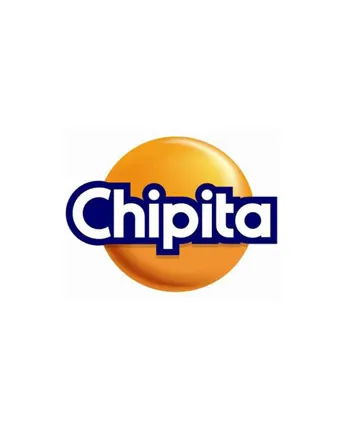
1973 - Chipita was established in Greece as a company producing and marketing savory snacks.
1988 - The main products were extra cheese-flavored corn snacks, subsequently followed as of 1988 by potato chips.
1991 - 7DAYS croissant was launched - individually packaged baked snack with long shelf life - followed shortly thereafter by the 7DAYS mini croissants.
1995 - The innovative savory Bake Rolls hit the markets, rapidly establishing itself as a consumer favorite in more than 20 countries.
1995 - Chipita started to establish as an international company, either by setting up its own subsidiaries or by entering strategic partnerships either with major international or with strong local companies.
1996 - Chipita started operating outside Greece by setting up production plants in Bulgaria, followed by Poland, Romania, Russia, more recently Turkey and Slovakia (2020).
1996 - Chipita set up commercial offices in 11 countries - Czech Republic, Germany, Hungary, Serbia, Slovakia, Croatia, the Baltics, Georgia, Ukraine, Belarus, and the UK.
2016 - 7DAYS became the Naming Partner of EuroCup and a Premium Partner of EuroLeague Basketball.
2021 - Mondelēz International acquired Chipita for €2 billion. The transaction was completed on January 3, 2022.